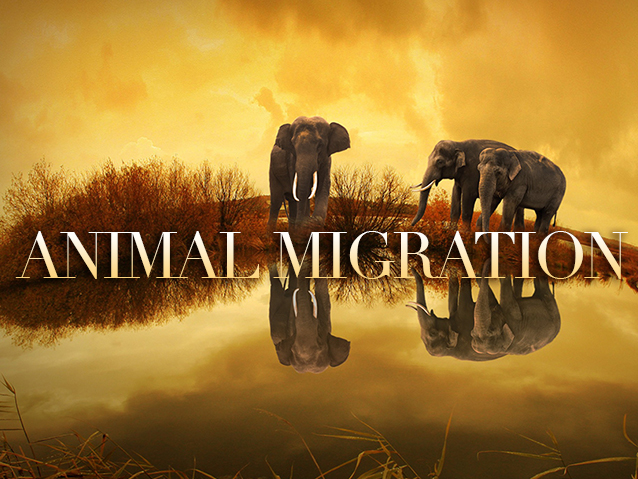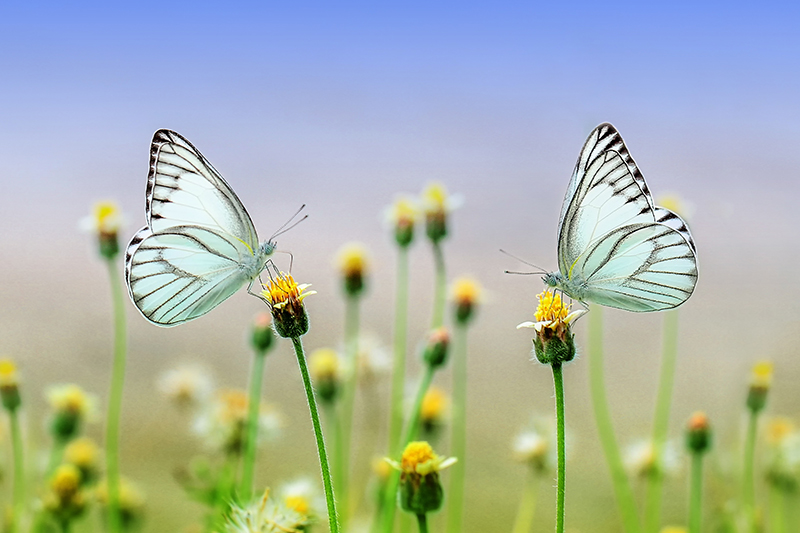Future Migrations as Earth Warms ( Animated Map, part 2)

Trying to Adapt
Several years have passed since studies conclusively demonstrated hat global warming is altering where and when many animals feed and breed. In 2003, two benchmark reports showed that more than 100 species have shifted their ranges toward the poles at an average of 4 miles a decade and that thousands of others were emerging, migrating or breeding days to weeks earlier than they did a century ago.
The Dangers of Change
Animal species differ in the way they adapt to climate change. As a result, range shifts by animal populations can create problems for animals that remain in their historical ranges. Similarly, changes in seasonal timing can knock animals out of sync with the seasonal appearance of the plants and prey they need to survive.
Desperate Adaptations
Now a scattering of reports from around the world suggest these mismatches may be producing a new level of behavioral changes. “The first kinds of behavioral changes were changes in range and timing,” says Camille Parmesan, a biologist at the University of Texas, Austin. “Now we’re seeing changes in diets and other behaviors that show some animals are trying to adapt to their new circumstances. Unfortunately, many instances are more an act of desperation than a true adaptation.”
Changes in Chromosomes
Many survival instincts are hardwired into an animal’s genes. Changes in day length, for example, trigger migration, mating or hibernation in many species. Many insects and other invertebrates also are programmed to respond to set images of what to eat or where to lay eggs. “A change in these responses requires wholesale changes in genetic makeup,” Parmesan explains. For example, Parmesan discovered in the 1990s that a West Coast butterfly called Edith’s checker spot had shifted its range north, one of the first examples of a clear relationship between behavior and global warming.

How a Butterfly Survived Seemingly Certain Doom
Seven years later, Parmesan began hearing reports of new Quino populations in the San Jacinto foothills east of San Diego—outside of the butterfly’s known historic range. “Instead of going north,” she marvels, “it may be heading up.” A species retreating to higher elevations to escape global warming wasn’t new. But the new upland populations were also laying eggs on a plant—Chinese houses—the Quino had never before been seen using.
A Butterfly Signals a Genetic Revolution
The adaptability of a the checkerspot may be a sign of “genetic revolution,” Parmesan says, because a butterfly shifting to a new host plant has to change more than the genes governing its search image and its instinct to lay eggs on a particular plant. Other necessary genetic changes may include the number of eggs being laid—something that must match the plant’s ability to shelter them and nourish the emerging caterpillars. Sometimes, caterpillars even need to produce new enzymes to detoxify a different plant’s natural pesticides.
COPING WITH CHANGE
In a handful of cases, animals are clearly adapting to global warming—at least in the short term. In Britain, for example, great tits appear to be coping well. These beloved songbirds are laying their eggs earlier in spring, keeping in step with earlier emergence of the caterpillars needed to feed their chicks. Specifically, the British great tits are laying their first clutch of eggs about two weeks earlier than they were 50 years ago. The bird’s egg laying and the caterpillar’s emergence both appear linked to temperature, concludes Oxford University ecologist Ben Sheldon.

But just across the North Sea, in the Netherlands, great tits are not doing so well. They, too, have advanced their egg-laying over the years, but not at the pace or to the extent of their British counterparts. As a result, the time when chicks need the most food now lags behind the peak in caterpillar biomass by nine days, reports Marcel Visser of the Netherlands Institute of Ecology. Visser believes this mistiming accounts for a dramatic drop in “double brooding” among his country’s great tits. In the 1950s, he says, most of the birds produced a second clutch of chicks each season. Now as few as 5 percent manage to do so. Linking this decline back to climate change, Visser found that only when a female’s first clutch of chicks coincides with peak caterpillar abundance is she likely to produce a second brood. Sheldon and Visser are now collaborating on studies that might reveal what helps and what hinders animals struggling to adapt to global warming.
Unnatural Acts: Tiger Attacks on Humans
In South Asia, a global warming-related rise in sea level is gradually flooding coastal mangrove forests in the Sundarbans of Bangladesh and India—habitat for one of the world’s largest surviving tiger populations in a unique ecosystem. That, in turn, may be partly responsible for a recent increase in tiger attacks in surrounding villages. “It is very rare that a tiger walks through human habitation unless it has no other option,” says Mahendra Shrestha, director of the National Fish and Wildlife Foundation’s Save the Tiger Fund. “Now we’re frequently seeing tigers straying from their habitat.” As an example, Shrestha describes a tigress that recently wandered 125 miles or more from the nearest tiger habitat. Walking through Indian towns and villages, she killed four people before being shot.

NWF Priority: Fighting Global Warming
NWF is shaping and supporting proposed federal legislation to combat the global warming that is changing the behavior of wildlife, from Arctic foxes and polar bears to songbirds and endangered butterflies. On other fronts, NWF’s Campus Ecology® program is promoting alternative energy projects and sustainable practices at colleges and universities across the country. Through its Eco-Schools USA, Climate Classroom and other education programs, NWF also is creating elementary and high school curricula that focus on global warming and its solutions.
To learn more about these efforts, go: www.nwf.org/globalwarming, www.nwf.org/ecoschools and www.climateclassroom.org.
THAT IS WHY the PleeatPak was created………to protect the ENVIRRONMENT ! BURGER’S LOVERS!!!! PS : INFO@GREENDUSTRIES.COM
Visitors: 6056


